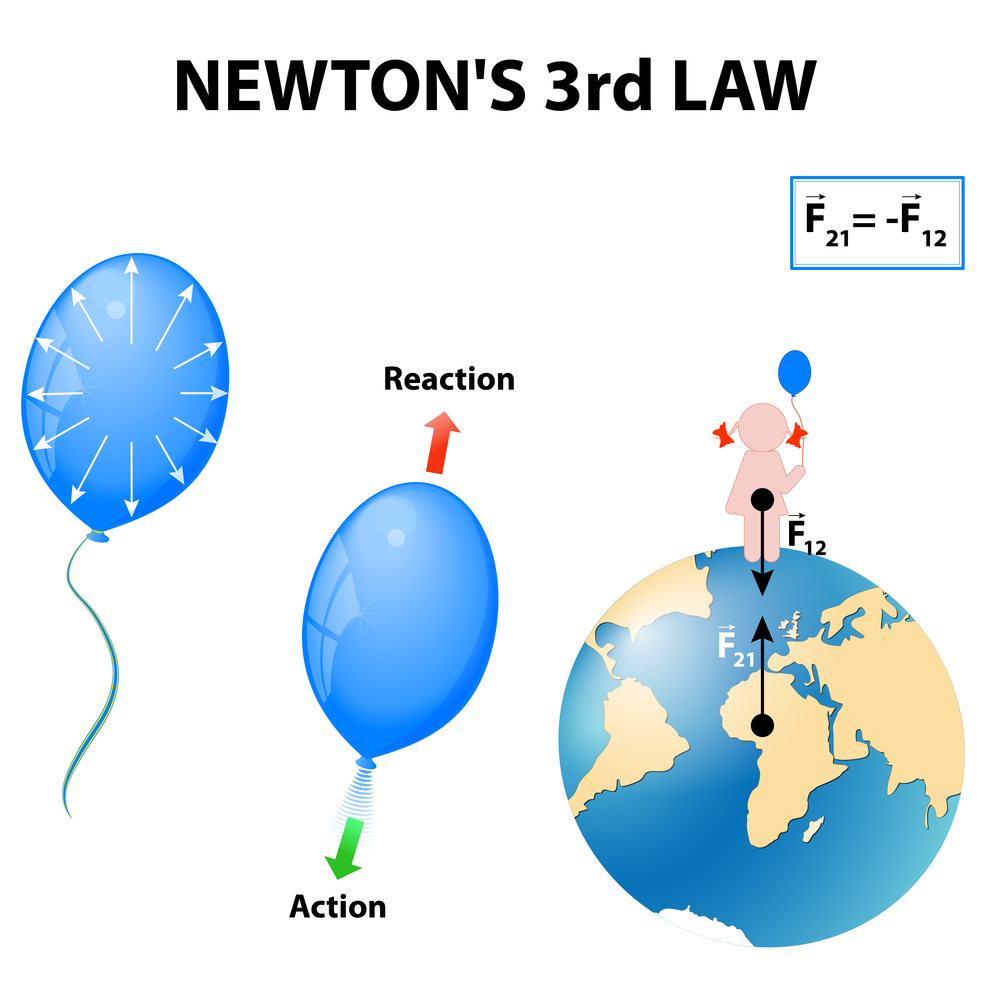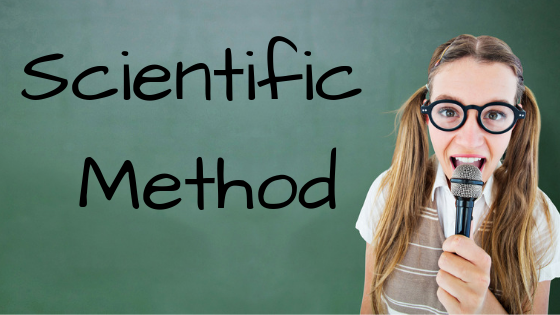
The Scientific Method, aka Scientific Process, is an organized way to answer a question or solve a problem. Scientists, or even you, can use the Scientific Method!
Science always begins with an observation.
For example, you are a high school student that is enrolled in the school’s breakfast club. This club provides you a healthy breakfast before your first class.
Observation: You notice in your math class that the students enrolled in the breakfast club tend to score higher on their math tests than the other students in the class who aren’t enrolled in the breakfast club.
You start to wonder if eating breakfast before a test could really improve students’ test scores.
Observation leads to a question. The question is, “do students who eat breakfast before a test, score higher than those who do not?”
Now we can use the Scientific Method to answer this question! Remember this is an organized way (list of steps) that can be used to answer a question.
Now Answer these “1st Round of Questions“
Now let’s use the Scientific Method to solve our question! First, let’s reviews what the 5 steps of the Scientific Method are, and then apply our problem to each step.
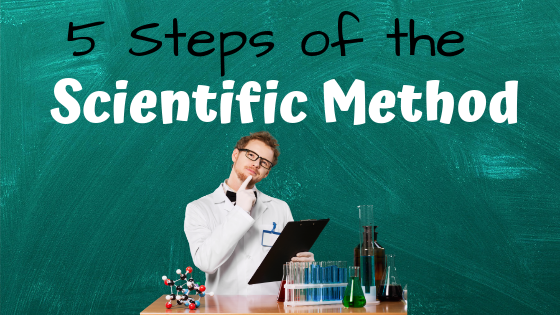
1.) Problem (or Ask a Question)
- Also referred to as, “State the Problem”
- Always in the form of a question
- Based on your observations
Now Answer these “2nd Round of Questions“
2.) Form a Hypothesis
- Educated guess (that answers your question)
- Has to be a testable statement meaning it can be proven true or false
- Usually written in the “If……………..then…………..” format
Now Answer these “3rd Round of Questions“
3.) Test (Conduct an Experiment)
- Set up a CONTROLLED experiment
Experimental & Control Groups
In an experiment, there are two groups. One is called the experimental group and the other one is called the control group.
- Experimental Group – the group that receives the treatment
- Control Group – the group that doesn’t receive the treatment
You need to have a control group because it allows you to see if the treatment had an effect.
For example, let’s say you were trying to find out if fertilizer increases plant height. Then you would need at least two groups: (1) experimental group – plants that do receive fertilizer (treatment) and (2) control group – plants that do not receive fertilizer. So you get 2 pots for each group, and place 1 seed in each pot. You give each pot the same amount of water, sunlight, and etc.
Now let’s say you observe both groups for 10 days. You come back on day 10 and this is what you see.
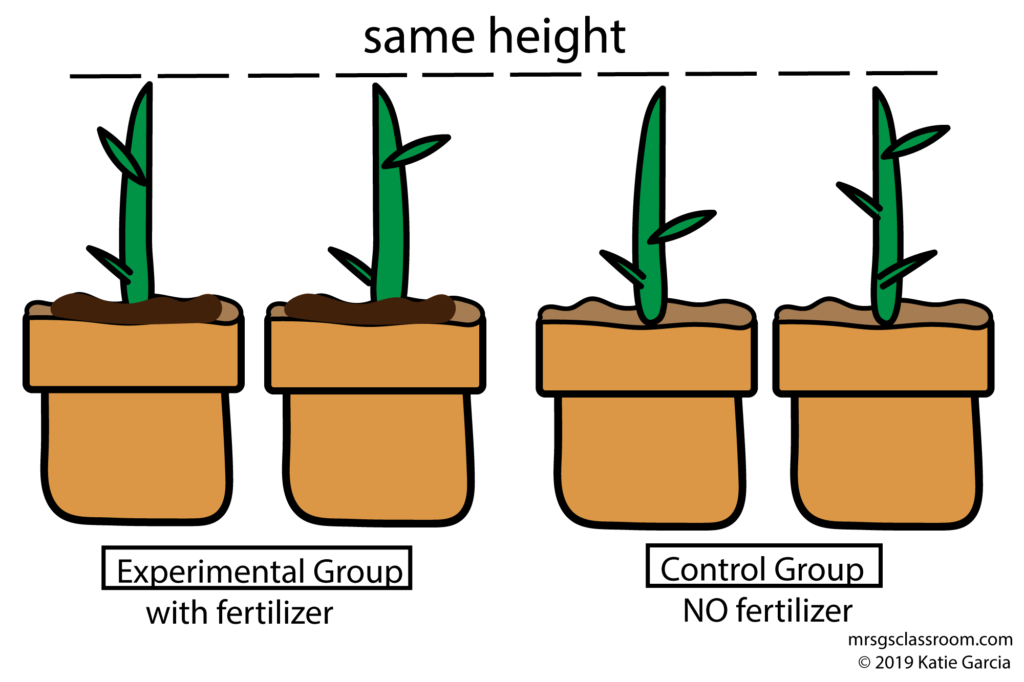
All the plants grew the same height!!! So did the fertilizer have a effect on plant height? No, right? All of the plants are grew the SAME height! This fertilizer didn’t make a difference.
If you didn’t have the control group, you wouldn’t have a baseline. You wouldn’t have anything to compare too that didn’t receive the treatment, to see if the treatment was causing the difference or if it could be something else.
Now Answer these “4th Round of Questions“
3 Important Variables
In an experiment, there are 3 important variables that you need to know: (1) independent variable, (2) dependent variable, & (3) constant. So what is a variable? A variable is something that CAN be changed in an experiment. For example, in an experiment I can change the “amount of water” I give each plant. I don’t have to change it, but I could. So that’s a variable.
The independent variable is the factor or condition that you are changing (or manipulating/controlling) between the experimental and control groups. Remember the fertilizer experiment? What factor was being changed/manipulated between the experimental and control groups? It was the amount of fertilizer. Some plants received it, and some plants didn’t.
The dependent variable is what you measure or observe between the experimental and control groups to see if the treatment (or condition your controlled) had an effect. For example, some plants were given fertilizer and some were not. The experimenter measured the height of plants to see if the fertilizer had an effect on plant height. So the height of plants is the dependent variable. The dependent variable is also called the responding variable because it depends on the independent variable (the amount of fertilizer). The independent variable does not DEPEND on plant height. It is not dependent on anything, so it is called “independent” variable.
A constant is a factor or condition that stays the same or consistent in the experiment. For example, if I am testing whether or not fertilizer effects plant height, then I only change the amount of fertilizer I give each plant. Everything else that I keep the same between the plants, like the amount of sunlight/soil/nutrients, are your constants! I like to think these are factors that you keep the same to make the experiment FAIR. In an experiment, you can only change 1 variable at a time. So in the case of the fertilizer experiment, you can only manipulate the fertilizer! Nothing else! If you gave the plants different amounts of sunlight and fertilizer then how would you know its the fertilizer affecting the plant? One plant might be growing taller than another because it received more water. Fertilizer might have nothing to do with it. So to prevent this, only change 1 thing (variable) at a time!
Now Answer these “5th Round of Questions“
4.) Analyze Results
- Record/Collect observations & data in tables
- Quantitative data – using numbers (collect data where you write down #s, like the plant grew “3.4 ft”)
- Qualitative data – using descriptions (collect data where you write descriptions, like “it smells like flowers”)
- Then analyze results (draw graphs/charts)
- Look for possible sources of experimental error
- equipment errors (precision of instruments is off)
- random errors (contamination)
- genetic variation (plant has a unfair advantage – better genes!)
- human errors (read the scale wrong)
Now Answer these “6th Round of Questions“
5.) Conclusions
- Accept or reject hypothesis depending on your results
- Conclude what you learned from your experiment
Now Answer these “7th Round of Questions“
The Difference Between a Hypothesis, Law, & Theory
Hypothesis – a possible answer to a problem (aka. educated guess)
Theory – an idea/explanation that has been proven over and over again from Scientific Method & collaborated with overwhelming amounts of observations/evidence
ex: Theory of Evolution by Natural Selection
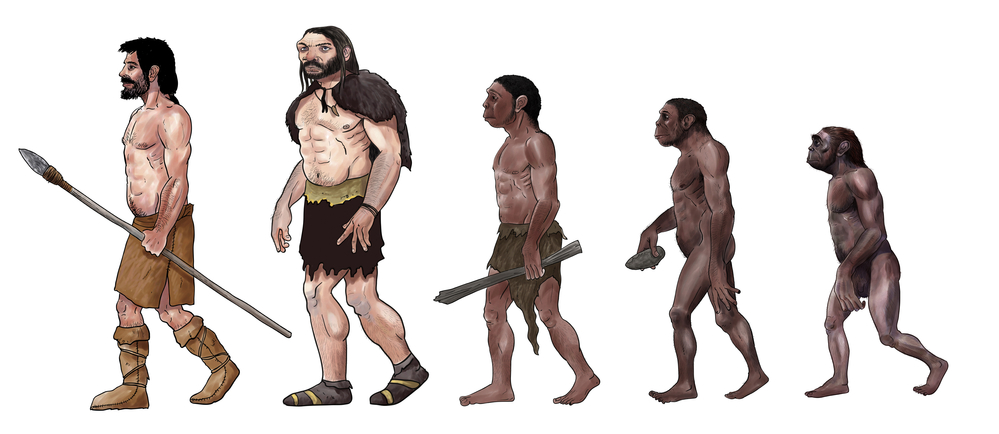
Law – a statement that describes some phenomena of the natural world that is collaborated with repeatable experimental observation
ex: Newton’s Laws of Motion
